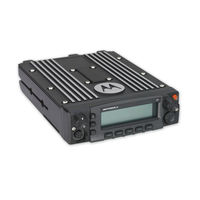
Motorola APX 7500 O5 Manuals
Manuals and User Guides for Motorola APX 7500 O5. We have 2 Motorola APX 7500 O5 manuals available for free PDF download: User Manual, Manual
Advertisement
Motorola APX 7500 O5 Manual (74 pages)
Control Head
Brand: Motorola
|
Category: Two-Way Radio
|
Size: 1.95 MB

